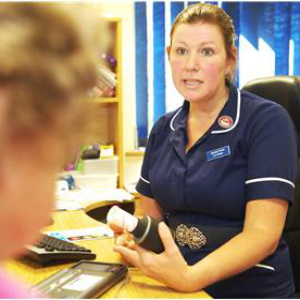There has only been a ‘modest’ increase in GP consultations since 2010, which has been more than matched with an increase in the number of full-time equivalent GPs, a leading think-tank has claimed.
A study by the Nuffield Trust concluded it was ‘not clear’ where the increase in GP workload pressure is coming from, as other practice staff are dealing with the majority of the increase in consultations.
The study of data taken from 337 GP practices in England between 2010/11 and 2013/14 revealed that the total number of consultations by practices as a whole increased by around 11%, while the number of consultations per patient per year increased from 7.6 to 8.3.
However, it claims that consultations taken by the GPs themselves rose by only around 2%, with nurse consultations rising by 8% and other staff groups such as pharmacists, physiotherapists and speech therapists seeing an overall 18% rise in appointments.
It said that this 2% increase in GP consultations was matched by a 2.3% increase in the number of FTE equivalent GPs.
However, GP leaders said it was ‘completely misguided’ to judge GP workloads on the number of consultations alone.
In a blog titled ‘Fact or fiction? Demand for GP appointments is driving the ‘crisis’ in general practice?’’ Nuffield senior fellow in health policy Natasha Curry, who is currently leading a two-year research programme into the future of general practice and primary care, concluded that it is unclear where the workload pressure reported by GPs is actually coming from.
She wrote: ‘While activity in general practice has increased, most of that increase is amongst staff groups other than GPs. Consultations with GPs rose by approximately 2%, whereas consultations with nurses rose by 8% and consultations with ‘other’ staff (a long list of professionals including pharmacists, physiotherapists, and speech therapists) grew by 18%.
‘If these trends are indicative of a wider national pattern, it seems that there has been a relatively modest rise in recording of direct consultations with GPs.’
Related stories
More than half of GPs to take early retirement
Patients must ‘not be forced to choose between access and continuity of care’, says RCGP
London should consider developing GP ‘salaried service’, finds report
The blog post added: ‘The full-time equivalent GP workforce (excluding registrars and retainers) over the period in question has not shrunk, but grown by 2.3% – around the same rate as the number of consultations.’
Ms Curry posed the question: ‘So what could explain the sense of rising pressure and crisis among GPs?’
She found that there was anecdotal evidence of mounting pressure on GPs from paperwork – having to go through revalidation, dealing with CQC inspections and chasing hospitals over results and patient referrals – but added more data needed to be made available to assess the impact of these pressures.
Ms Curry wrote: ‘What is clear is that there is a sense among GPs of rising and unsustainable workloads. What is not clear is exactly where that pressure is coming from. Our analysis provides some insight into what has happened to consultation trends since the last formal publication of estimates in 2009, showing that the largest increases appear to be for nurses and staff other than GPs. That raises questions about the assumption that a rapidly rising number of consultations is driving pressure on GPs.’
She added: ‘What is needed are more systematic and nuanced ways of looking at GP activity through combining data across practices to enable accurate assessment of real trends. Availability of such data would also allow for full and transparent scrutiny of what is, after all, a publicly funded service.’
GPC chair Dr Chaand Nagpaul said it was ‘completely misguided’ to ‘judge GP workload on appointments alone’, as patients were increasingly older patients with several complex health problems, often requiring home visits or hospital follow ups.
He said: ‘Simply looking at crude appointment numbers does not reflect the reality of the pressures placed on GPs. It is also about the intensity and the complexity of consultations. We have increasing numbers of patients with multiple long-term conditions who need to see us more often.
‘It is important not to make judgement on these statistics because there are these complexities. GPs are now regularly expected to complete the work in a single consultation equivalent to that of four outpatient appointments, take for example a patient with angina, diabetes and rheumatoid arthritis.
‘For GPs, managing multiple problems which require far longer than a single 10-minute appointment is not just hugely stressful but also unmanagable and unsustainable.’

















